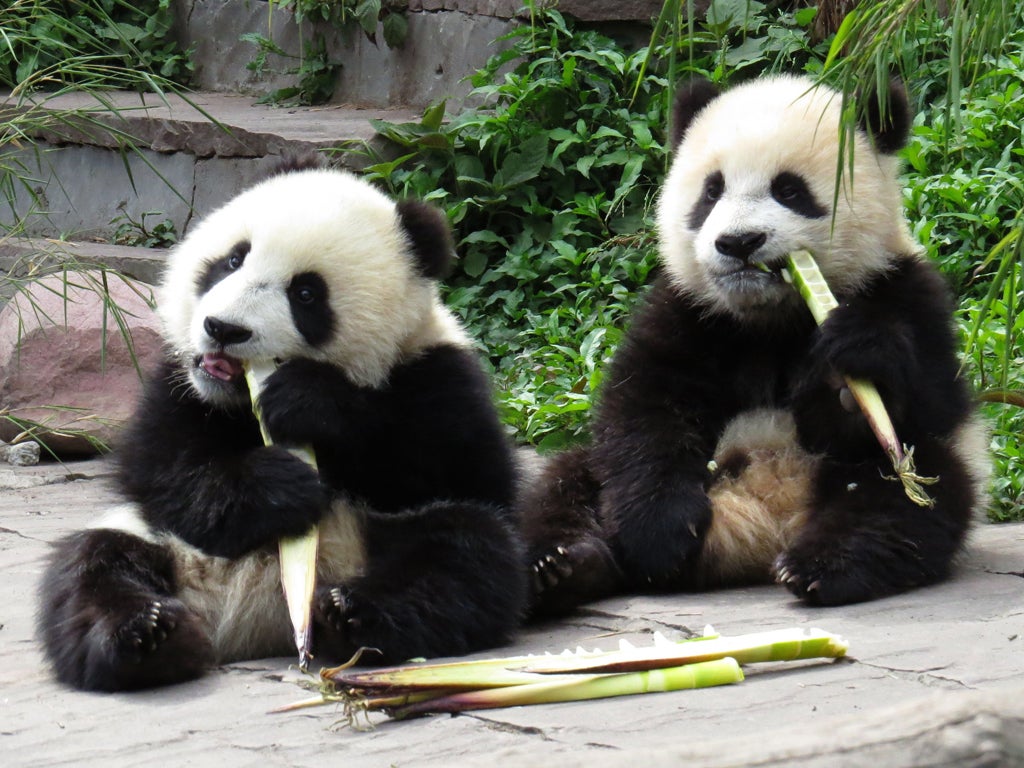Scruffy, picky, sexless – but we love pandas
Edinburgh Zoo has been getting frantic about the possibility its pandas will mate

Edinburgh Zoo should perhaps have been more wary of the Chinese bearing pandas.
During the Cold War, Communist China took to using pandas as diplomatic levers, bestowing them on favoured nations or statesmen: Richard Nixon scored a pair for the National Zoo in Washington when he visited China in 1972, and Edward Heath matched him in 1974. A glance at the trajectory of both men’s careers after those dates makes it clear that a panda is anything but a good luck charm.
China is still playing the panda card, but not for anything as nebulous as goodwill or prestige: pandas are guaranteed earners of hard currency. Nowadays they are leased – the going rate for a breeding pair is reportedly $1m (£650,000) a year, plus a handsome bonus for any cubs produced (and the Chinese get the cubs). Zoos queue for pandas, eager to boost their revenue and profile; but it is far from clear that they generate enough income to pay their way – not just the rental, but preparing suitable quarters (the Chinese insist carry out rigorous inspections before they hand over the pandas), supplying the right kind of bamboo. Unless they produce cubs, in which case takings will rocket, pandas can break the bank.
Which is why Edinburgh Zoo has been getting frantic about the possibility that its pandas, Tian Tian and Yang Guang, will mate. From her temper and lack of appetite, it was clear that Tian Tian was coming into her brief annual season. But after a week of feverish bulletins on the possible imminence of actual panda sex, yesterday the zoo announced that she had been artificially inseminated. Now we can only sit back and wait –and since pandas go in for delayed implantation, there will be plenty of time to knit little panda bootees.
The mystery of panda sex is nothing next to the mystery of how a slightly scruffy species of bears, with narrow dietary preferences and admittedly attractive markings, became such a magnet for cash and emotion. There are far rarer, far more beautiful creatures (any subspecies of tiger, for example). Some responsibility lies with Sir Peter Scott, whose 1961 panda logo for the World Wildlife Fund made them chief symbol of man’s carelessness with nature. China’s canny, stingy distribution of pandas turned them into a furry forbidden fruit. The myth of their evolutionary inadequacy has enhanced their charm (though they functioned successfully in the wild for a very long time: it is only human destruction of their habitat that threatens them).
There is this excuse for panda mania: it bribes the Chinese government to modify a short-term, utilitarian view of nature. But otherwise, it is an expensive distraction from the real, dreary business of conservation – which means, among other things, finding alternative sources of income for the ordinary people who want to make a living from wild habitats. We ought to leave the pandas to get on with it.

Join our commenting forum
Join thought-provoking conversations, follow other Independent readers and see their replies